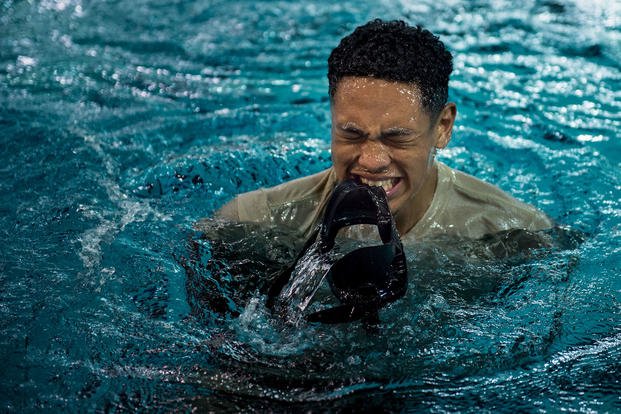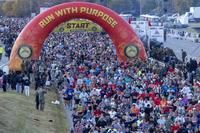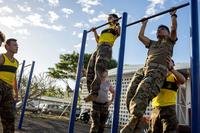Preparing for any special-ops training program is challenging. Selecting a branch of service that is highly competitive and small in number makes for a daunting task for any athlete. Being an athlete without much running or swimming background might require more time in training to prepare properly.
Here is an email from a former powerlifting athlete who seeks Air Force PJ training:
Stew, I'm reaching out to ask for some extra advice, specifically about swimming. Before I got it into my head to serve as a PJ, I was a competitive powerlifter for about six years, so I'm coming from a very well-developed strength/muscular base and very little cardio, especially low conditioning to running.
Thank you, Jack
Jack, I understand that. As a powerlifting football player, I know the transition it requires to go from a power athlete who thought anything more than 100 yards was long-distance running.
You may need to reduce the weights and start doing triathlon training (run, swim, bike) to make the transition fast. It really helps. I found I did not lose much strength, but dropped about 10-15 pounds and became much faster with more muscle stamina for high-repetition calisthenics.
Also, the good news for the physical ability and stamina test (PAST) is that you can swim using freestyle, which is taught all over the world in just about every pool. I would consider taking lessons or joining a master's swimming team or class if you really are a masochist with your training in the pool.
Learning the stroke properly and getting into swimming shape at the same time can be done, but it is tough and will test how bad you want to become an Air Force PJ. Running will test you equally as well.
Your training now also depends on your running history. How many miles do you run currently? More or less than 10 a week? If the answer is less than 10 miles a week, you may want to start with a running plan and replace the runs in your training program with the beginner running plan for a month or two.
As for swimming, you have to put in the time in the pool. Get in the water. Swim as much as you can. Rest when needed, but tread water when tired from swimming and work to get more comfortable. Comfort in the water is critical to your success during indoctrination (INDOC) at PJ training.
But first, you need to master PAST. To get to the training, you must score competitively on this entrance PT exam. Once you do that, then you can focus on what it takes to get through the training pipeline and add more running, swimming and pool skills (treading, buddy breathing), along with load-bearing rucking, carries and crawls.
Good luck with the transition. Give yourself some time to do it properly. It could take up to a year, depending on your personal situation.
Stew
Stew Smith is a former Navy SEAL and fitness author certified as a Strength and Conditioning Specialist (CSCS) with the National Strength and Conditioning Association. Visit his Fitness eBook store if you're looking to start a workout program to create a healthy lifestyle. Send your fitness questions to stew@stewsmith.com.
Want to Learn More About Military Life?
Whether you're thinking of joining the military, looking for fitness and basic training tips, or keeping up with military life and benefits, Military.com has you covered. Subscribe to Military.com to have military news, updates and resources delivered directly to your inbox.



















